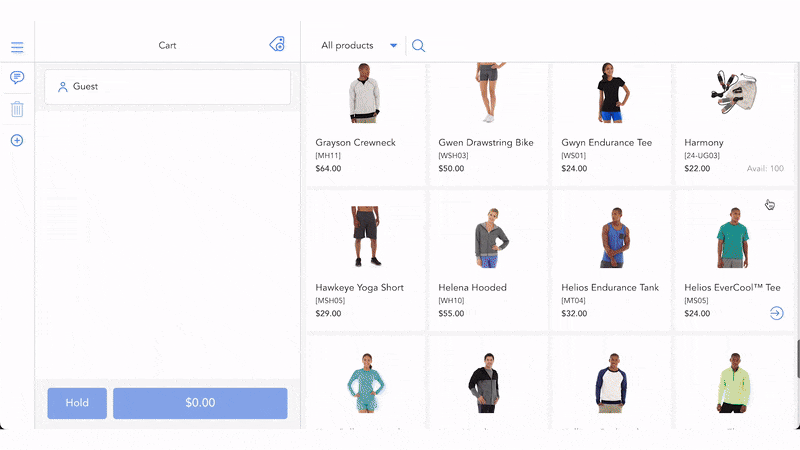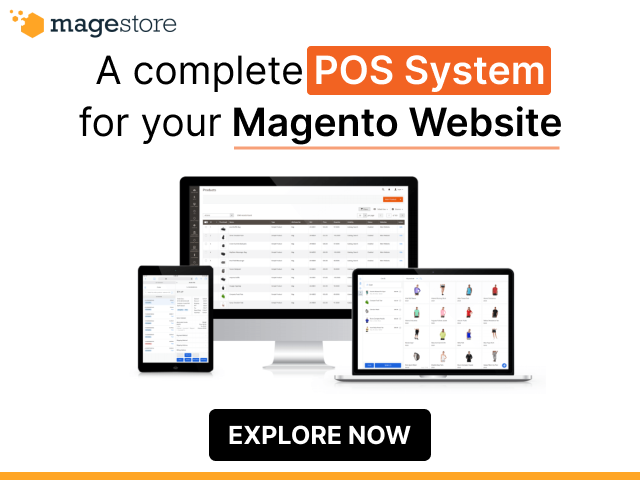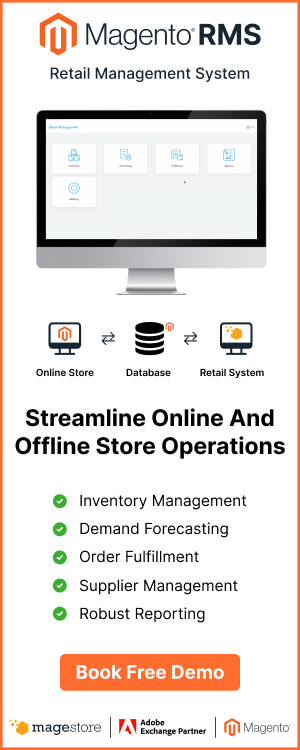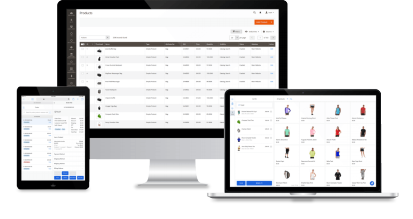Order cycle time is the time to process an order, starting from the moment you receive an order until when it is shipped to the customer. The cycle time speed is crucial in increasing customer experience and satisfaction. By understanding this concept and how to calculate cycle time, you can better identify bottlenecks and improve your supply chain workflows. We’ll show you the 6 best practices to reduce order cycle time that you can apply for your retail business.
What is order cycle in inventory management?

Order cycle is the average time between when you receive an order and when you hand it to a carrier for delivery to the customer, excluding the actual shipping period.
It is a necessary KPI to measure the efficiency of your supply chain operations. All retailers want to reduce this time amount, as the longer it is, the worse it impacts your ability to attract and retain shoppers. A deep study into this metric can help you determine where to enhance your order processing and devise plans to boost your fulfillment activities.
On the other hand, inventory order cycle time refers to the duration (days) you need to sell all products once you receive them from the supplier. You can take your supplier’s minimum order quantity (MOQ) as the target selling volume and measure how quickly they are sold. The stock cycle time reflects the number of stock you’ve used and how many you need before placing a restock.
Therefore, the inventory order cycle accounts for the orders, re-orders, and economic order quantity so you can decide how much stock they should keep for each SKU and when you should replenish the products.
What is order cycle time process?

From a customer perspective, the order cycle has 4 main steps: order transmission, picking, packing, and shipping. When calculating the time to process an order, you add up the time it takes to complete these steps.
- Order Transmission: You’ll receive a notification after customers checkout online and submit their payment and delivery information. That’s when the customer order cycle starts. Today modern eCommerce platforms allow quick order transmission within a few seconds. Getting an automated system will help you optimize order cycle time.
- Picking: After transmission, your warehouse management software will send the order details to the warehouse operation. A picker will be assigned to pull the correct SKUs to fill the order.
- Packing: The ordered products will be handed to a packer once the picking is completed. This person is responsible for packing, sealing, and labeling the order accurately to prepare for the last step: shipping.
- Shipping: At the shipping station, you send the items to a delivery provider such as UPS or FedEx. Usually, companies have less control over the delivery time and mainly rely on the carrier.
For retail store managers, the process is different. Inventory cycle time involves purchasing and receiving stock from vendors and ends when all those products are sold or turned over.
- Purchase order: You place a purchase order with your supplier, specifying the product specifications, quantity, price, delivery time, and other terms and conditions.
- Receive stock: You receive the inventory and put them into your warehouse.
Fulfill customer orders: You use these products to handle customer orders as the above fulfillment process: pick-pack-ship.
Order cycle time formula and examples

Consider several elements from the order date to the shipping date to calculate your order cycle time. Here is the formula for your calculation:
Order Cycle Time = (Delivery Date – Order Date) / Total Orders Delivered
The first thing to remember is you’re measuring the order cycle time within a specific time frame. It can be quarterly, monthly, daily, or even hourly. Make sure all elements in the formula are consistent in the time frame before putting them on the calculator.
The delivery date is when you send the products to a carrier, while the order date is when the customer purchases the products. The total orders delivered refer to the number of orders sent to shipment successfully within a specific period.
For example, an electronics store wants to calculate its order cycle time in December 2022. The month has 31 days and the shop handled a total of 6,000 orders.
Their order cycle time is (31 days * 24 hours/day * 60 minutes/hour)/ 6,000 orders = 7,44 minutes/order.
It means this store completes each order in 7,44 minutes.
After you get the result, compare it with your business goal to identify areas for improvement. You can record the data for each month and see the progress over time.
How to reduce cycle time?

Here are the 6 best methods to improve your cycle time:
Calculate your order cycle time
First of all, you must measure your current order cycle time and see where you’re standing compared to your goal. This metric provides valuable insights into your supply chain performance.
Check for aspects in the processes that slow down your cycle. For instance, if the fulfillment time is too long, you should evaluate your warehouse or logistics flow. If there is a gap between when a customer places an order and when your warehouse receives the information, you must check your software for issues. Once you identify roadblocks, you can find solutions to optimize the cycle time.
Assess your warehouse flow
Bottlenecks in your warehouse process will hurt your cycle time. For example, you can look for inefficiencies that slow down the picking and packing activities:
- Can pickers locate the items easily?
- Are enough shelving racks in the right positions to move products quickly?
- Is your fulfillment center near the picking area enough?
After identifying these problems, you can reduce the order cycle time. Check your warehouse KPIs and seek improvement opportunities. For example, you can investigate your warehouse layout to minimize the walking path and place relevant product categories near each other for faster item picking. In addition, designing warehouse slotting to utilize the available space is also a good idea.
Negotiate with suppliers on inventory delivery
Late inventory deliveries from vendors can slow down your customer order fulfillment. Measure how long you need to wait for a restock to arrive and if it affects your cycle time. Try to negotiate with your suppliers to get the soonest supply shipment.
Think about handling late deliveries
Consider different scenarios where late or canceled deliveries may occur and how you would handle them. For example, if your warehouse staff picks the wrong items frequently, your cycle time will suffer. In this case, the customer will complain and return the products, which will take extra time to prepare a replacement package.
Therefore, you should list the most common mistakes in selecting and shipping the wrong products. With this list, you can make the necessary changes.
Frequently evaluate cycle time

Order cycle time can fluctuate if there are changes or disruptions in the supply chain. For instance, you can encounter an order exception that causes longer delivery than usual. In contrast, you may notice a shorter cycle time after adopting an automated warehouse management system.
In addition, if you have to deal with a large number of returns, recording and sorting these products will cost you more time, affecting the productivity of fulfillment tasks.
There are many variables that influence the cycle time. Therefore, it’s important to monitor and reassess this metric regularly. The result will let you know where to investigate further, and whether your action plans have a positive effect.
Accurate order cycles with an advanced tool
Implementing a digital solution can help you control the warehousing process and speed up the cycle time. Magestore Retail Management PWA is customized software that streamlines the store operation for you in inventory, omnichannel sales, and supplier management. All data from your website, POS, and back-office are centralized in real time for monitoring.
Inventory management:
- Track your stock level and stock movement across warehouses and store locations
- Update inventory for each SKU in real time in a single view with accurate inventory counting
- Control storage locations by standardized bins and pallets
- Generate stock on-hand report to get the current product quantity and location
- Calculate how much safety stock you should keep and when to restock
Supplier management:
- Control vendor lists and purchasing process in 1 central hub
- Measure historical sales performance to establish item low-stock threshold and know when to reorder
- Suggest which items need to be re-ordered to avoid out-of-stock products and automatically generate purchase orders
- Forecast demand for storing enough inventory and reaching an economic order quantity (EOQ) with suppliers
- Control unit of measurements that convert between purchase order units and stock units
Retail order management
- Manage all customer orders from multiple channels, including online and offline stores
- Unify stock data from all warehouses and choose the most efficient one for fulfillment
- Simplify omnichannel order fulfillment with a simple pick–pack–ship workflow
- Use Magento default shipping methods (DHL, FedEx, UPS, and USPS) or integrate your 3PL providers
With Magestore, you can reduce manual and repetitive tasks and process orders faster with fewer errors. An automated system will benefit you with a lower order cycle time.
FAQs
Differentiate cycle time vs. lead time
Lead time is the period between when a customer checkout their cart and when they receive the ordered products.
On the other hand, cycle time refers to only the time that you take actual work to complete an order.
For example, it takes you 15 minutes to prepare an order (cycle time), but it takes 2 days for the package to reach the customer (lead time).
What is customer order cycle time?
Customer order cycle time is the amount of time to process an order. It includes receiving, picking, packing, and sending the order to a carrier for shipping.
Conclusion
Cycle time is an important metric. It tells you if your store operation needs improvement and whether you’re ready for expansion. If you want to grow your business, your supply chain must be able to deal with more customers. Optimizing your cycle time will prepare you with an efficient workflow and free up your human resources to handle more critical jobs.













